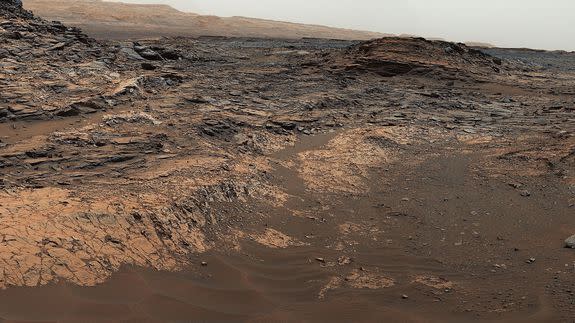A new experiment could sniff out signs of alien life on Mars and beyond

A new tool developed by the military could eventually help sniff out life on Mars or other places in the solar system.
The prototype instrument — called the Bio-Indicator Lidar Instrument (BILI for short) — probably won't fly to space anytime soon, but if it does, it could be used to detect biosignatures like methane or even oxygen in the atmosphere of an alien world from the planet's surface.
Basically, BILI might be able to hunt out signs of life on an alien world.
SEE ALSO: Europe's Mars lander is lost on the red planet
"If the agency develops it [the instrument], it will be the first of a kind,” Branimir Blagojevic, a NASA technologist who worked at the company that created the experiment, said in a statement.
Originally developed by the military to sniff out toxins and pathogens in the air, BILI, which would be attached to a Mars rover, relies on sniffing out elements in dust plumes coming from the planet.
The detector uses "two ultraviolet lasers to pulse light at the dust," NASA said, causing the particles to become excited. Scientists can analyze the molecules in that state to see what the plumes are made of and possibly find chemical signs that would point to organics and life.

Image: NASA
The instrument's methods would allow it to detect these possible organic molecules from hundreds of feet away, which could be a benefit in a tough Martian environment where it might be difficult to get to the exact spot needed to sample something from up-close.
“BILI’s measurements ... can be conducted quickly over a broad area," Blagojevic said. "This is a survey instrument, with a nose for certain molecules."
The instrument could also be used on an orbiting spacecraft, which would detect biomarkers from above whatever interesting planet or moon it happens to find itself around.
While BILI isn't slated for a Mars mission anytime soon, other spacecraft already in orbit around the Red Planet or slated to launch in the future are trying to hunt for biosignatures on Mars.
The European Space Agency and Russia's ExoMars orbiter, called the Trace Gas Orbiter, just made it to Mars, where it should hunt for possible signs of past or present life in the planet's atmosphere.
The two space agencies are also planning to send an ExoMars mission to the Red Planet's surface as early as 2020 in order to burrow beneath the surface and look for life.
India's Mars orbiter is also searching for signs of methane from its place in orbit.
NASA is planning to send a rover to Mars in 2020, but it isn't specifically designed to look for life on the red planet. Instead, that mission will look for signs of extinct microbial life on the planet and even cache rock samples for scientists to investigate if they can be returned to Earth on a future mission.
